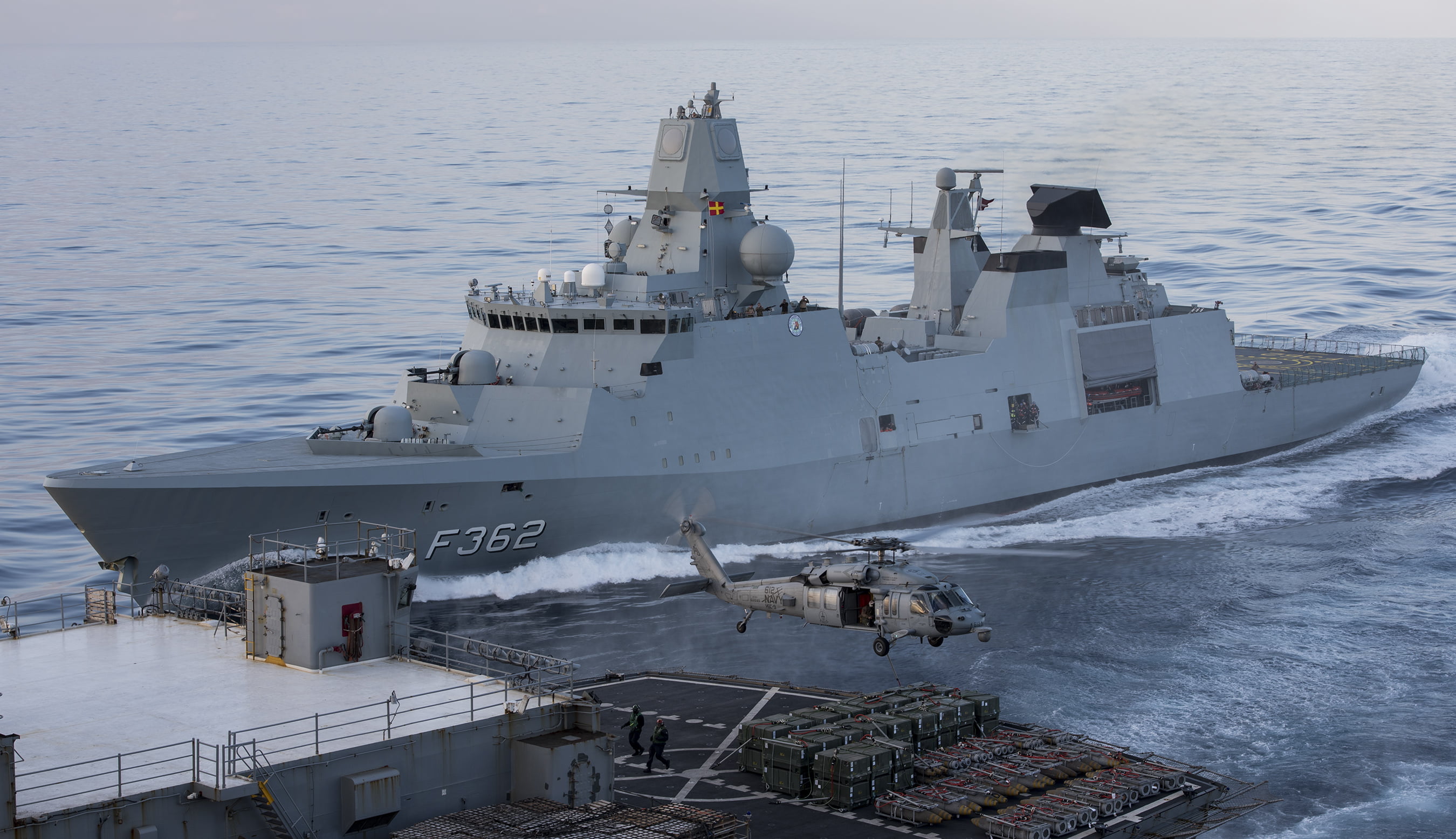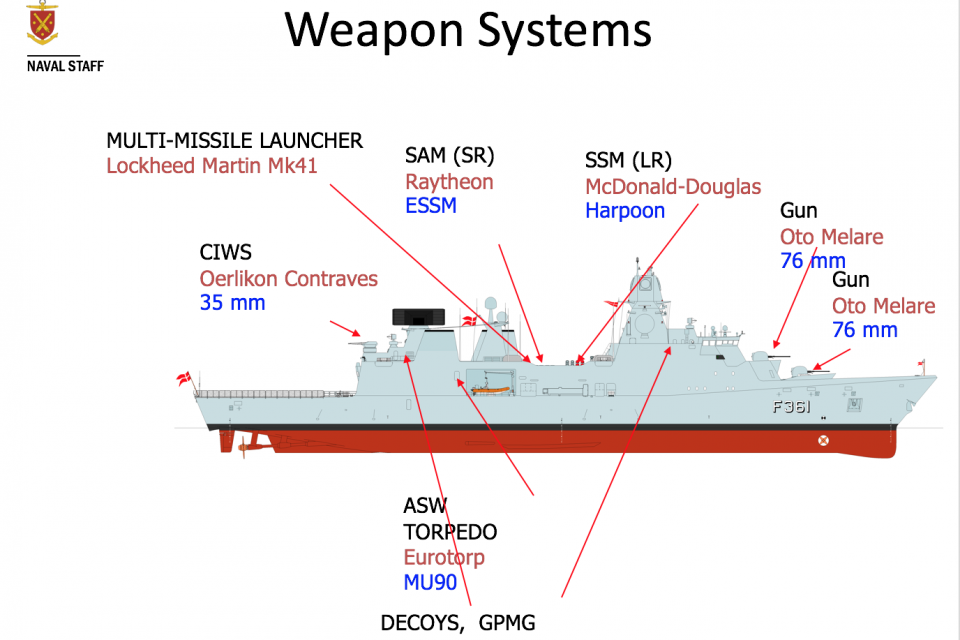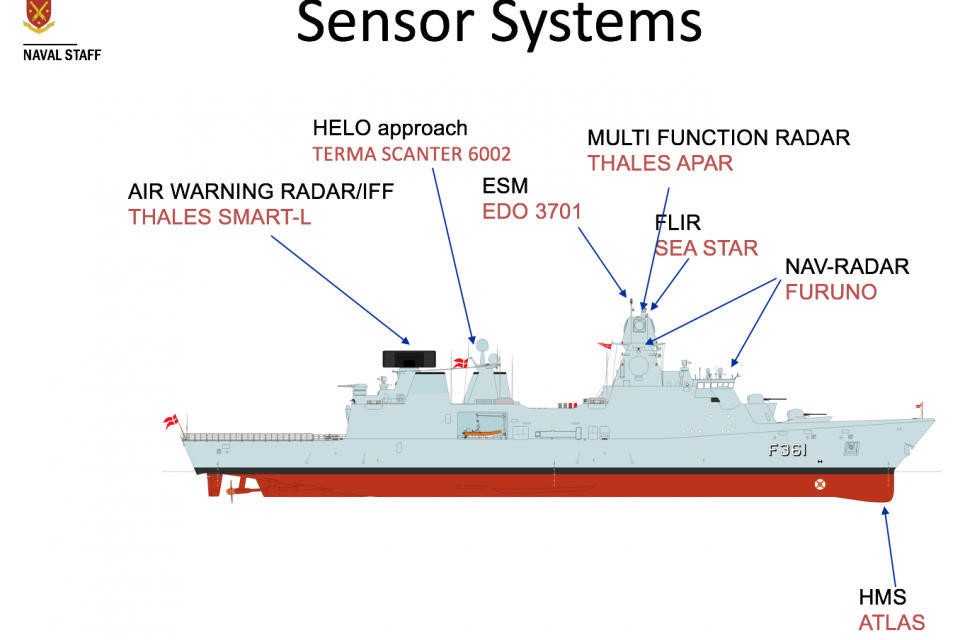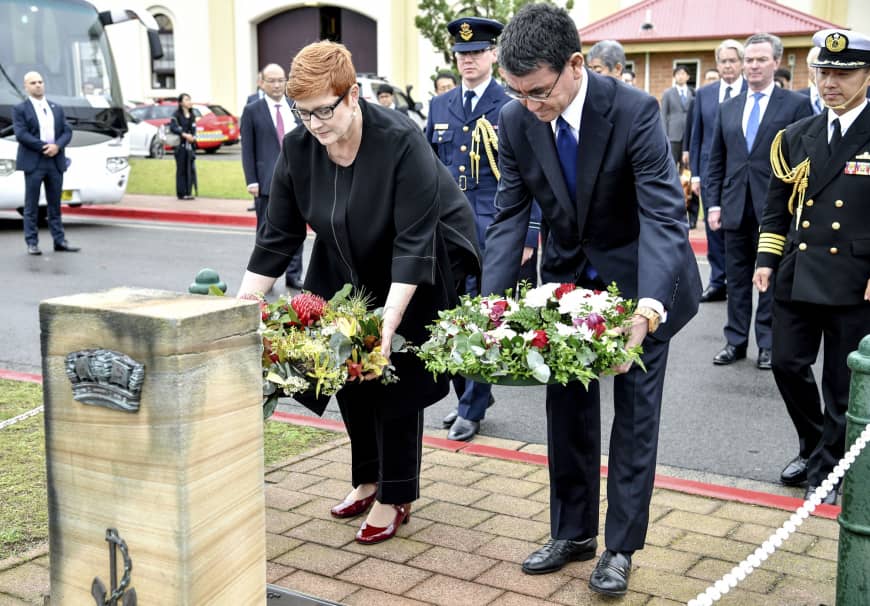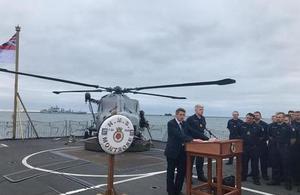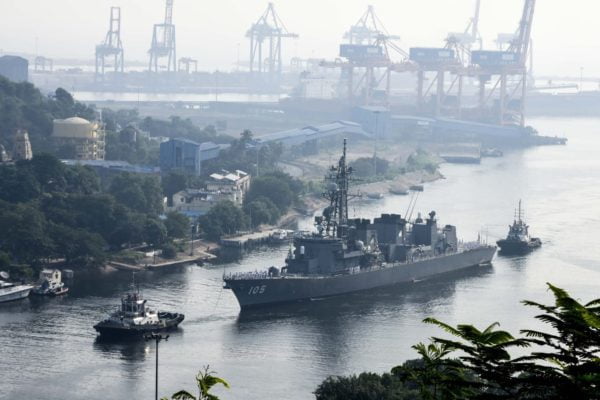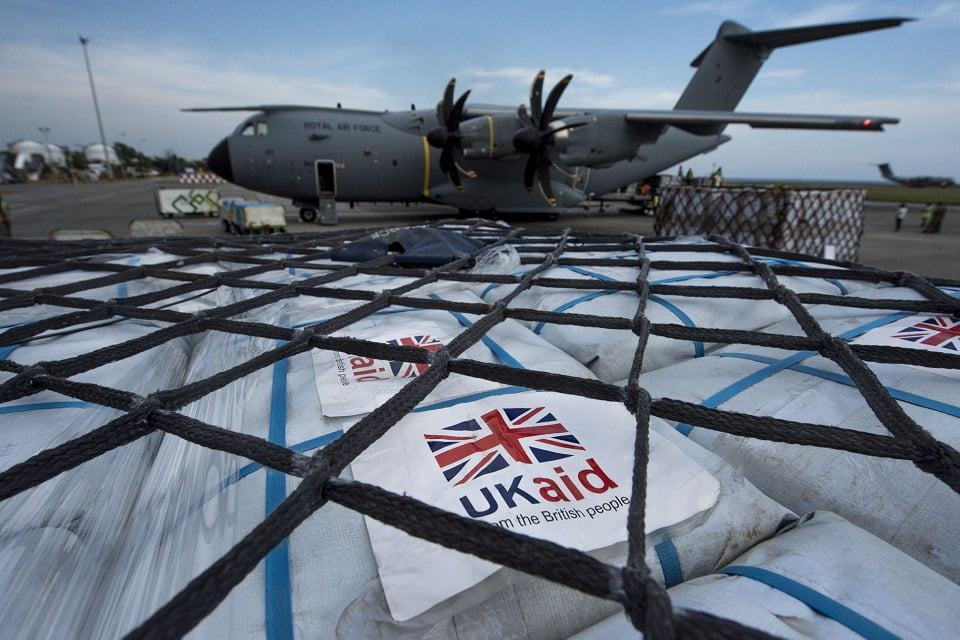By Robbin Laird
In our work on Northern Europe, we have focused in several trips and reports on how, why and in what ways the Nordics are cooperating more closely and effectively to enhance their joint security.
We have highlighted how we see this as part of a broader trend in which clusters of states are working together to enhance their ability to enhance their defense and security against the return of Russia and the rise of China.
We see clusterization as the next phase whereby liberal democracies do more for themselves in their joint defense rather than simply relying on diplomatic globalization initiatives through organizations like the EU or NATO to do that for them.
Clusterization is a key to generating enhanced capabilities that can work interdependently with key allies outside of a regional cluster to reinforce the capabilities in a realistic and effective way to deter core adversaries.
In the case of the Nordics, clearly the United States is the key outside power, with Brexit Britain and those states within continental Europe which have capabilities which can show up effectively to bolster the underbelly of the Nordic region.
But at its heart, the Nordics need to bolster their own capabilities as well to work more effectively with their offshore allies and their continental European partners.
But to be blunt: this requires looking more realistically at what the defense of the Nordic region means against the evolution of Russian policies, strategies and capabilities rather than simply to assume that NATO as multi-member alliance simply shows up.
The current Trident Juncture 2018 exercise ongoing in Norway is a good example of how a leading Nordic nation is rethinking its policies.
On the one hand, Norway is working their national mobilization approach.
On the other hand, they will host several allies within Norway and in part it is a question of what capabilities can be brought in a timely manner that would really make a difference in a crisis.
It is not simply a question of showing up; it is about blending those domestic and allied capabilities into an effective crisis management force against specific and targeted Russian threats.
A good example of enhanced cooperation among the Nordics is the cross border training being conduct among the Finns, the Swedes and the Norwegians.
According a recent article published by Front Line Defence, this training was the focus of attention.
Cross-Border Training (CBT) started between Sweden and Norway in 2009 and then the Finns joined in 2010. By 2011, they were operating at approximately one event per week. And by 2012, were engaging in about 90 events at the CBT level.
That shaped a template which allowed more cost effective and regular training, and laid the foundation for hosting a periodic two-week exercise where they could invite other nations to participate in air defense exercise in the region. This regular and flexible cooperation led to the emergence of the Arctic Challenge Exercise (ACE).
Since 2015, the three air forces have been shaping a regular training approach that is very flexible and driven at the wing and squadron level. “We meet each November, and set the schedule for the next year, but in execution it is very, very flexible. It is about a bottom-up approach and initiative to generate the training regime,” says Ertsgaard.
The impact on Sweden and Finland has been significant in terms of learning NATO standards and having an enhanced capability to cooperate with the air forces of NATO nations.
The air space they are operating in is very significant as well. Europe is not loaded with good aviation training areas. The range being used for CBT is a very large and open airspace, which allows a wide variety of training opportunities for the three nations, and those who fly to Arctic Challenge or other training events. The range includes over land and water, so there is an opportunity for multi-domain operational training as well.
But the challenges of providing for enhanced Nordic capability within a broader trans-Atlantic framework remains a work in progress, notably when measured against Russian activities, behavior and evolving capabilities.
The scope and nature of that change was well described and analyzed In a recent article published by a retired senior Swedish officer, Major General (Ret) Karlis Neretnieks.
Scandinavian military security must be seen as a whole where all countries concerned, Norway, Sweden and Finland are heavily dependent on each other in case of a war in the region. A fact quite seldom discussed or analysed in depth. Something that is quite surprising as it has implications not just for the Scandinavian countries but also for NATO´s possibilities to defend Europe.
He then provides a careful look at that the defense situation in part based on what we already know or should now from the 1930s and its challenges.
Although Finland has a well organised “economic defence” with stockpiles of food and other vital necessities a modern society will have great problems if its industry is cut off from the outside world.
This leads to perhaps Finland´s greatest vulnerability – its dependence on reasonably safe lines of communications, by sea, air and land.
If there is an armed conflict in the Baltic Sea region it is very probable that more or less all shipping to and from Finland will cease. Thereby affecting approximately 80 % of Finland´s trade.
Finland would become totally dependent on what could be transported through Sweden or in Swedish airspace.
This interdependence; Finland protecting the northern half of Sweden and Sweden keeping lines of communication open to Finland unfortunately has not been given enough consideration in Swedish defence planning.
This of course also has great implications for Finland´s possibilities to receive help from NATO.
In the nineteen-thirties, there were plans to support Finland by sending Swedish forces and weapons to Finland in case it was attacked by the Soviet Union. The plans to support Finland with ground troops were never implemented, a fact that still to some degree plays a role in discussions regarding Finnish-Swedish military cooperation.
Regardless of not wanting to participate in a war when the Soviet Union attacked Finland in 1939 it was not just out of solidarity with a small neighbour that Sweden in 1939/40 provided Finland with 25 fighter planes (every fourth plane in the Swedish air force), 144 pieces of artillery, 135 000 rifles and 51 million cartridges.
Finland´s role as a “flank guard” for Sweden was fully understood. During the Cold War the plans were less ambitious but it was still very clear to the Swedish government, as well as in Finland, that the defence of Finland also was a part of the defence of Sweden, and that it was in the interest of both countries to support each other.
In the sixties and seventies when both countries operated the same type of jet fighters, the SAAB 35 Draken, Sweden kept a number of Drakens, officially a part of the Swedish air force, in store that could be transferred to Finland on short notice.
At the same time Finland had a larger number of trained pilots than necessary just to fly the then existing Finnish planes (at the time Finland was forbidden to have more than 60 fighter aircraft according to the Finnish- Soviet peace treaty of 1947).
Such options don´t exist anymore. Sweden has nothing to spare if there would be a serious crisis or a war in the region.
He underscored the importance for Sweden and Finland to ensure that they could receive support from allies through the SLOCs in the North Atlantic as well as form Northern Norwegian bases as well.
NATO is again planning for shipping reinforcements across the Atlantic and Russia has partly rebuilt, and continues to increase, it its capability to act in the Atlantic.
This makes the defence of northern Norway not just a problem for the Scandinavian countries but for Europe as a whole.
It is no coincidence that both the UK and Norway are buying new P-8A Poseidon Maritime Patrol Aircraft, nine respectively five, to patrol the Norwegian Sea and the northern Atlantic.
From Scandinavian or Nordic point of view these increased Russian capabilities and their strategic importance is quite alarming. Not just that it creates strong motives for Russia to attack NATO facilities in northern Norway, it also threatens the whole regions connections with the outside world.
Even if Russia might encounter problems attacking ships and planes moving across the Atlantic it is obvious that isolating the Scandinavian Peninsula would be a quite easy task if NATO could not operate from bases in northern Norway.
Just as in the case of Finland, both Norway and Sweden, are dependent on secure sea lanes for export and import of vital goods and for receiving military help.
Both countries, as well as Finland to some extent, build their war planning on help from NATO, in reality from the US.
The defence of Norway, especially northern Norway, therefore is a vital common interest for all the Scandinavian countries as well as for NATO.
After further analyses of the situation facing the Nordics, the author then considered some of the key efforts which they need to make to enhance the defense and security of the Nordic region.
Considering the dependencies and the vulnerabilities that have been described, what ought to be done?
Some actions have already been taken.
Norway is redirecting its thinking and its preparations towards Article 5 operations. Sweden and Finland have concluded Host Nation Support agreements with NATO. They have also signed bilateral agreements with the US and the UK regarding enhanced cooperation in areas as sharing and developing military technology and joint training.
Both countries are also participating in NATO exercises as Trident Juncture 2018 in northern Norway engaging some 45 000 personnel from more than 30 countries.
Regarding what should to be done on a national level, in general terms it ought to be: Sweden should increase its capabilities to secure Finland´s communications with the outside world and increase its ability to protect Norway´s back, Finland and Sweden together should increase their common capabilities to protect the Aaland Islands and sea lanes across the Gulf of Bothnia, Norway should allocate still more resources to anti-submarine warfare and air defence in the high north.
Although Finland and Norway could and should do a bit more in the areas mentioned above the great culprit at the moment is Sweden.
Geographically being the hub in the region on which the security of other countries depend it is not taking on the responsibilities it should, thereby jeopardising not just its own security but also the security of its neighbours. At the moment (2017) Sweden spends just 1 % of GDP on defence, Norway spends 1,6 % and Finland 1,4%….
Apart from strengthen their own defence capabilities, one other measure that would drastically increase Nordic security, and take cooperation between the Scandinavian countries to much higher level, would be Finland and Sweden joining NATO.
It would not just solve the problem with an isolated attack against those countries which would put NATO in a very precarious situation when it comes to defend the Baltic States or northern Norway in a later stage, it would also make it possible to coordinate plans and operations between the Scandinavian countries.
Making it possible to get more joint fighting power of the money spent on defence. It would also open up for “work sharing” where each country could take on a more specialised role.
Just to take one example.
Must the sea lanes to the Swedish west coast have to be a Swedish problem or could it be something that NATO as an alliance could handle?
What more, any Russian attempt to seize territory in Scandinavia will probably come in the form of a surprise attack.
In such a situation a swift and coordinated reaction will be crucial. It will be too late to start discussions on who should do what, sort out command arrangements etc…..
To conclude, all the Scandinavian countries, especially Sweden, have good reasons to consider how their own defence capabilities affect their neighbours, and adapt their planning and defence structures accordingly. Something that will not come cheap.
Probably we are speaking of defence budgets of at least 2 % of GDP.
Although such measures would raise the threshold for Russian military adventures in the region and increase their ability to fight a war in, they would still have limited value as long as not all Scandinavian countries are members of NATO.
Major General (Ret) Karlis Neretnieks was born 1949, and has served as: head of department in the Army Staff, G-3 in an armored division, Commander of 18. Mechanized Brigade, Chief of Operations in the Central Joint Command and as President of the Swedish National Defence College (University). KN has graduated from both the Swedish and Norwegian General Staff courses and also pursued academic studies at the Graduate Institute in Geneva. He is a fellow of the Royal Swedish Academy of War Sciences and also a board member of the Swedish Atlantic Council.
His article can be read in full and found here:
http://karlisn.blogspot.com/2018/10/nato-and-scandinavian-strategic.html?m=1
We would like to thank our colleague and partner, Hans Tino Hansen, the CEO of Risk Intelligence, for bringing this article to our attention.
Our most recent report on Nordic security, can be found here:
The Nordics and the Strategic Shift
The featured photo shows the Nordic Prime Ministers during a meeting in Helsinki last year. Credit Photo: Finnish Foreign Ministry.



